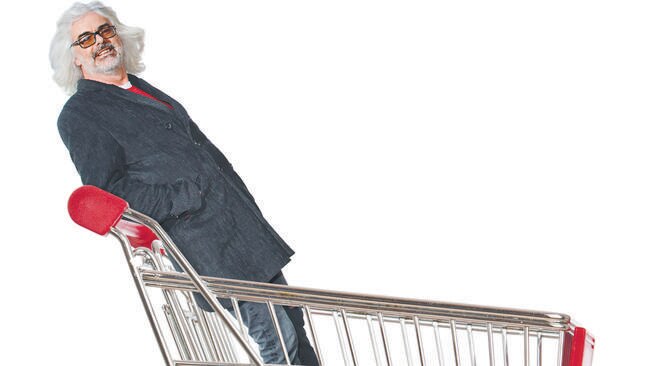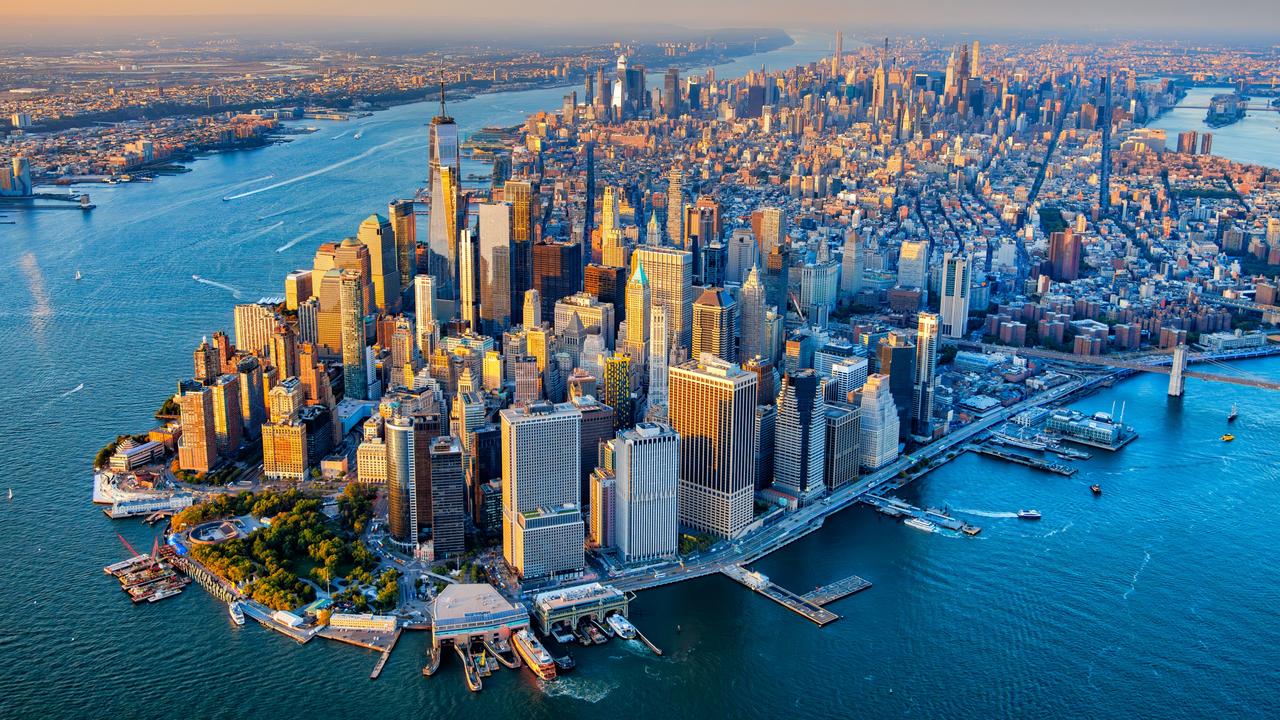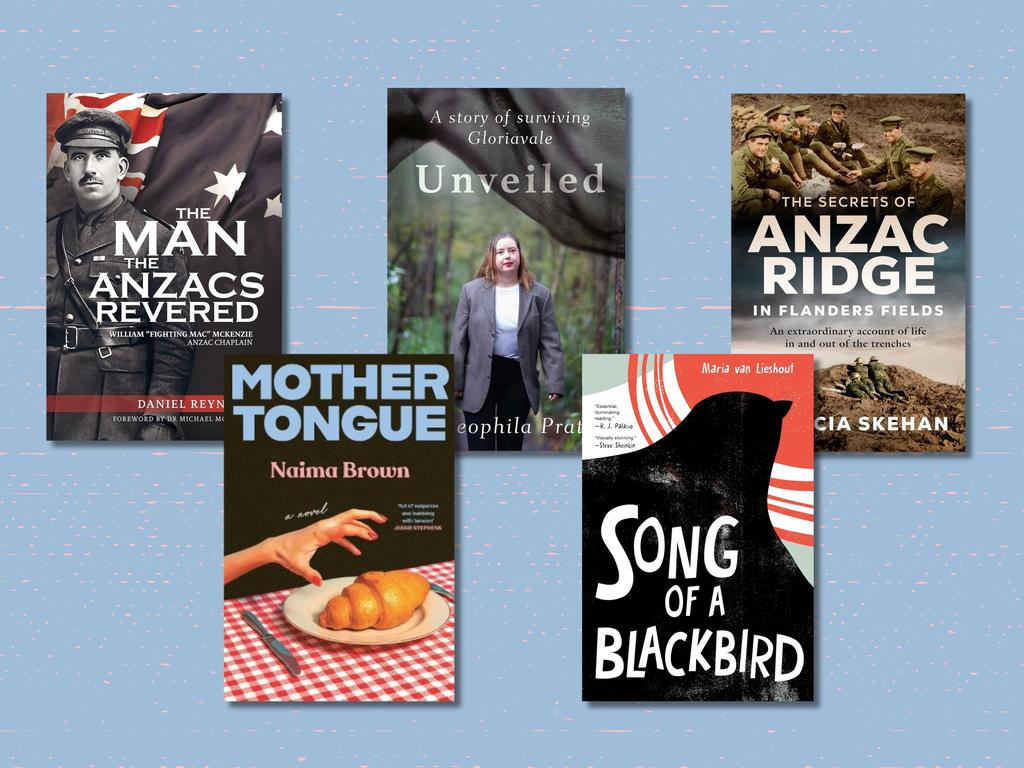David Walsh at MONA: the god of mall things
ON Tuesday, David Walsh’s Museum of Old and New Art was transformed into a shopping centre. But ‘shoppers’ may get more than they bargained for.

THREE years ago, when David Walsh opened his Museum of Old and New Art on the banks of the Derwent in Hobart, it was unlike any other art museum in Australia. MONA was privately built, financed by Walsh’s gambling, and stocked with an idiosyncratic art collection that visitors could touch, see, hear and, indeed, smell.
Everything about MONA was about breaking the museological rules, from the entry via a tennis court to its subterranean chambers, its absence of teach-’em-good didactic panels and determination to up-end art world pieties.
But things went terribly right. People came in droves, those from interstate happily paying a $20 entry fee (most state-run galleries are free). Undeterred by the stink of sex and death, they headed straight to the notorious “poo machine” before dining in MONA’s trendy bars and restaurants. Before long, MONA was Tasmania’s biggest tourist destination, adding millions to the local economy and pushing Hobart into the top-10 world cities to visit. This edgy little museum on the far side of the world had more front than Myer.
So perhaps we shouldn’t be surprised at MONA’s latest transformation, into the kind of retail and entertainment complex where many Australians happily spend their time and money. MONA has become a shopping centre, and Walsh its king of the mall.
Visitors who arrived at the newly opened Southdale Shopping Centre this week could not fail to notice the cheery corporate makeover. Balloons, Southdale T-shirts and oranges were being handed out. There are glamorous advertisements for luxury brands, from Hugo Boss to Estee Lauder. The cafe has become a Starbucks.
And it’s not all about the shopping: downstairs is a community centre with music, discussion groups and a knitting circle making beanies for the homeless. A children’s play area has slides, building blocks and games.
“The nature of shopping centres is much more fundamental to the definition of a society than a museum,” Walsh says. “Our cultural levers are sport and shopping.”
MONA’s corporate makeover, which took place without notice or fanfare on Tuesday, is so convincing that several visitors this week automatically assumed that Walsh — who has run the museum at a loss and had a well-publicised tax scrape — had pulled in some big-money sponsors. There’s a poster for G4S, the security firm. Roche, the pharmaceuticals giant, is offering free DNA testing. (A nearby poster asks, “Are you of Aboriginal descent?”) A lightbox display showing some pristine wilderness carries the caption “Developing Tasmania”, an invitation to subdivide and conquer.
By now, the security alarm may be starting to ring, because Southdale Shopping Centre is an elaborate game, another leg-pull in the MONA story. The promised retail mecca doesn’t exist, although those who know their history of property development may recognise the name as that of the first modern shopping mall. The Southdale Centre opened in Minnesota in 1956, the brainchild of architect Victor Gruen, who also gave his name to the dazed-and-confused wandering that such places can induce, the “Gruen transfer”.
And which artist is responsible for transferring Gruen to the Derwent? Review has learned that Swiss artist Christoph Buchel is behind the temporary transformation, although Walsh will “neither confirm nor deny” his involvement.
Buchel makes large-scale, walk-through installations that utterly transform their settings, leaving no trace of the host art museum or organising entity. That hasn’t quite happened at MONA: if Buchel wanted to complete a top-down transformation, it’s been restricted to the entry-level foyer and the “C’MONA” community centre downstairs.
It all serves MONA’s ethos of challenging assumptions about the presentation of art, and about its own place in the art world. A MONA spokeswoman says Buchel is interested in “how well known the MONA brand has become internationally”, and whether people will still come when it is in its retail disguise.
And there is certainly an ironic slant in the placement of signage for alluring luxury goods and corporate giants in an art museum: a deliberate blurring of cultural and commercial zones.
But the larger concept of Buchel’s installation would go unnoticed, perhaps, if not for a bulky, 378-page paperback that accompanies the exhibition. The book, called Land of David, purports to be a biography by David Walsh, although he says he has written nothing in it.
Instead there are seemingly miscellaneous chapters about quests for various kinds of perfection, starting with an essay by Gruen on the role of the shopping centre as the modern-day agora or town square. There’s a biographical sketch of cosmetics pioneer Helena Rubinstein, and a chapter on Solomon R. Guggenheim and the backstory of his famous art collection and museum.
A fascinating chapter concerns Critchley Parker’s vision for a collectivist Jewish settlement around Port Davey — the site was to be given its original name, Poynduk — in Tasmania’s southwest wilderness. Parker, son of Frank Parker, founder and editor of The Sun newspaper in Melbourne, believed Port Davey could be the “Paris of Australasia” for the production of fashion and luxury goods, and died at the site when he travelled there alone and fell ill.
These and other chapters concern aspects of racial identity, immigration and settlement. There is Adolf Eichmann’s chilling testimony about the Final Solution; a warning from the Australian government, in the form of a graphic novel, about people-smugglers and the fate of those who use them; a copy of the Immigration Restriction Act 1901, the legislative basis of the White Australia policy; and a description of “legal definitions of Aboriginality”. The last quarter of the book is an index of Israeli settlements in the West Bank.
A common theme, if one can be discerned, is utopianism, the single-minded pursuit of an ideal. “The self-certainty that thinks you can create a utopia is the same self-certainty that thinks you’ll make a pretty good dictator,” Walsh says, sitting in MONA’s enormous staffroom with its views of the river.
“When you know what the answer is, there’s a considerable likelihood of the outcome not reflecting anything that was expected ... Adolf Hitler would have thought that his intentions were very positive, he was going to make the world a better place. The fact that he was so monstrously wrong is not something he could ever become aware of once he’d journeyed down the path.”
Utopian ideals, benign or otherwise, become apparent at Southdale. Isn’t a shopping centre itself a model society in miniature? Gruen imagined shopping centres as places where people of all classes could mingle — such interaction was “healthier for democracy” — although he was dismayed in later years at what malls had become.
Another utopian reference is not so obvious. A prefabricated dwelling has been erected at MONA, with a billboard advertising Poynduk holiday villas at Port Davey: the little house is similar to the caravillas used in the Israeli settlements. Another dwelling in the same style has been erected at Port Davey in the state’s Southwest National Park: an art installation too far for the Tasmanian Conservation Trust, which has accused MONA and the Parks and Wildlife Service of secrecy about the project in the World Heritage area.
A MONA curator, Jarrod Rawlins, says such a project would not be possible without the necessary approvals. “To helicopter a house into the middle of nowhere, it’s not going to go unnoticed, you have to do it properly,” he says. Part of the conditions were to ensure that the breeding season of the endangered orange-bellied parrot was not disturbed.
BUCHEL is known for his large-scale installations that are total works of art. Typically, he removes the familiar signposts and reassuring context of the art gallery and instead presents the visitor with the site of disaster or dystopia.
Critics writing about his work in Europe and North America have pointed out the novelty — in some projects, the installations were entered not through a bright, glass-fronted gallery but through an unassuming pub — before describing the disorientation and confusion the artist produces. The sensations are all the more disturbing because the meaning is never entirely clear.
Roberta Smith, art critic for The New York Times, has described Buchel’s installations as obsessively detailed “panoramic collage”. “They’re like bristling three-dimensional history paintings: messy offices, banal living rooms, sinister hideouts, piles of old appliances or towers of newspapers, with each space telling its own story,” Smith writes. “It is as if the detritus of dozens of sad lives has been warehoused yet remains in use. Everyone has just gone out to lunch or has been arrested.”
For his piece at the 2010 Glasgow International contemporary art fair, called Last Man Out Turn Off Lights, Buchel constructed a maze of shipping containers, prison cells, dormitories and an autopsy room. Inside was the wrecked remains of a passenger jet, with seats and mangled pieces of fuselage about the place: a reference, perhaps, to the 1988 terror attack on a Pan Am flight over Lockerbie.
Another installation in Britain involved Buchel transforming a heritage building in London’s Piccadilly — formerly the home of his gallery, Hauser & Wirth — into a working community centre, complete with fitness classes, counselling rooms and a charity shop. Buchel’s work was also seen at the 2008 Biennale of Sydney: an installation, No Future, in which he had octogenarians performing the Sex Pistols’ God Save the Queen at the Museum of Contemporary Art.
Buchel made headlines in the US in 2007 over an installation at the Massachusetts Museum of Contemporary Art. The piece, called Training Ground for Democracy, was to include a two-storey Cape Cod cottage, a bar, a vintage theatre and nine shipping containers, among other things, and was his first large-scale work to be commissioned by an American art institution.
Museum and artist fell out spectacularly as costs of the installation blew out, and the MoCA refused to acquire one of the artwork’s components: the burnt-out fuselage of a 737 jet. The museum displayed some of the installation under tarpaulins, and the episode has been the subject of litigation. An appeals court in 2010 found in favour of Buchel, citing the artist’s moral rights in his work.
MONA did not publicise Buchel’s involvement, and has gone to some lengths to keep his identity secret, although the artist was spotted at the opening of Southdale Shopping Centre on Tuesday night. His collaboration with MONA was flagged in The Art Newspaper last year, and until this week Hauser & Wirth had listed his MONA project on its website. The reference has since been removed. MONA curators Olivier Varenne and Nicole Durling have been circumspect about Buchel, although Varenne says the artist’s intention is to challenge the role of the art museum, and by absenting himself makes the point more strongly.
Walsh says the “nature of the artist defines the nature of the joke”, and that the Southdale ruse appears to be working, at least in some quarters. He suggests there has been genuine interest in the advertised property development in the World Heritage area of Port Davey, a proposal that is “clearly a joke … There would be nothing to the joke at all if it couldn’t be misconstrued.”
Walsh seems happy for the deception to run its course, and perhaps identity-blurring projects such as Buchel’s Southdale Shopping Centre are a reminder, if one were needed, of the sometimes uncomfortable relationship between art and commerce.
But the maverick museum-builder must be aware of the MONA brand and its value, as others would like him to replicate the MONA effect elsewhere.
He reveals he has had preliminary discussions with the Barangaroo Authority about his possible involvement in an art museum at the Sydney Harbour development. “I’ll keep talking to them,” he says. “Nothing will happen, of course. I really think that some cultural enterprise will happen there, because I think they really do need something.”
His dream project, he says, is to build a science museum: a pyramid with a cemetery at the bottom, a radio telescope at the top, and filled with art.
But he rejects the suggestion that MONA in its short life has already become just another part of the cultural establishment, a shopping centre for art. His intention is to keep MONA on its toes, and who knows how it will evolve? The lesson of utopian ideals is that they rarely turn out as their inventors intend.
“How do I know what my mind or my successor’s mind will be?” he says. “Solomon Guggenheim specified that he wanted an abstract museum, a nonrepresentational museum, which he built.
“Even before he died, he lost control of the enterprise ... It became a powerful thing, but it wasn’t what he intended. Is that an unfortunate outcome or a wonderful thing?”


